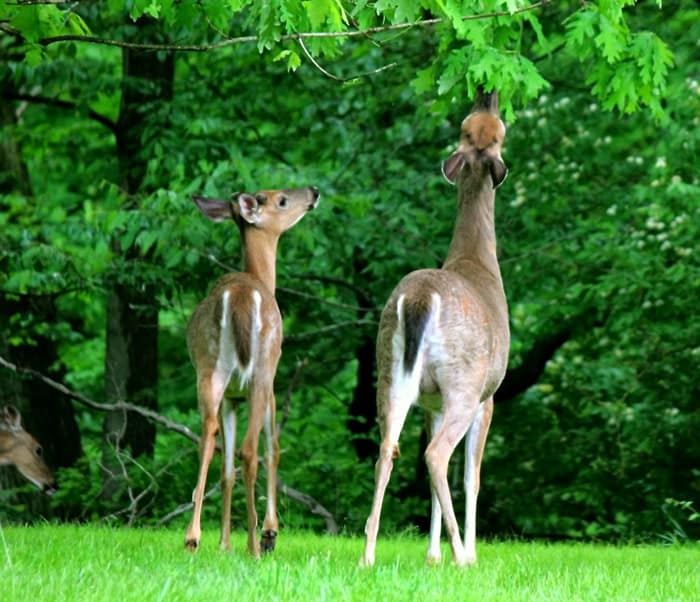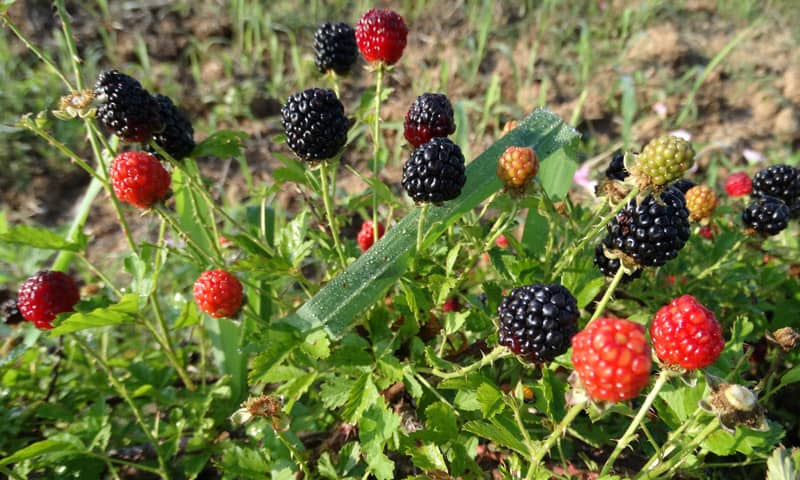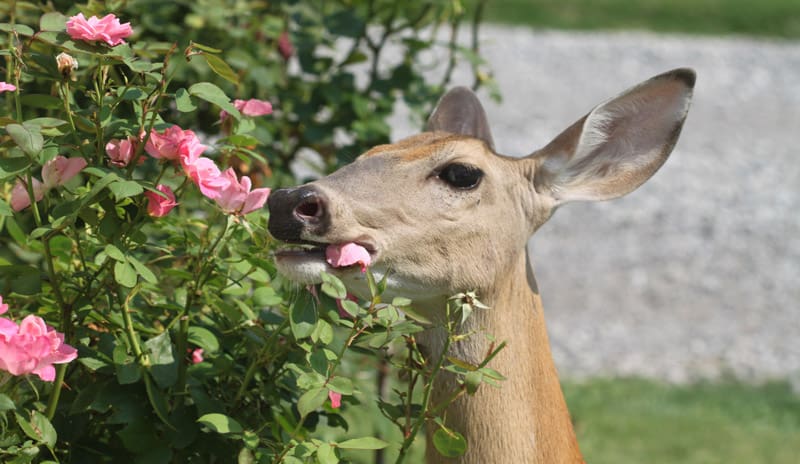Ever wanted to take care of a deer of your own? Maybe you are curious on how to raise one and yes, it’s possible even if you have no expertise in taking care of animals.
Fundamentally, in raising a deer, you should know what do deer like to eat for them to grow healthy and naturally.
Deer are adapted to eat plants. This animal is what we call the herbivore type. Herbivores get their nutrients and energy from eating plants; their digestive system is specialized to grind only plant material.
In the wild, they eat any food available in the area like bushes, leaves, and other edible items as long as it came from plants. Unfortunately, some of these foods do not compose the necessary nutrients needed for them to survive in the harsh environment.
In this article, we will show to you what deer like to eat and the things you should consider in maintaining their diet.
Knowing About Deer
The most common species of deer everyone knows about is the whitetail deer. Whitetail deer are ruminants; this type of animal features multiple stomachs similar to cows, goats, camels, and bison.

When they eat, the chewed food will be stored in one of its stomachs and then later, the swallowed food is brought up again to the mouth and is processed again to continue the digestion.
After the said process, the food will finally enter the last chamber, where the food is sent onto the small intestine. During this part, the nutrients from the food they eat is finally absorbed and used by its body for them to grow.
Knowing About Fawns
Fawns are deer’s offspring; typically a young deer in its first year outside its mother’s womb. This cute mammal is very playful in its young age. Whitetail deer fawns are born sometime in late April and early July.

A deer gives birth to one or two (sometimes three) fawns. Moreover, having twin fawns are not common.
Milk requirements
Fawns do need to consume their mother’s milk, of course, just like any other newly born. Later on, their diet will eventually change; they will start eating solid foods like fruits, leaves, and grass.
If you want to feed a fawn in the absence of its mother’s milk, an excellent alternative is a cow’s or a goat’s milk; you just have to put it in a milk bottle. All kinds of goat’s milk can be used as a substitute, but it’s suggested to use cow’s milk more. However, you can mix both.
Always remember to heat the bottle before feeding it to the fawn and keep it in a vertical position to stimulate as if it is feeding with its mother.
The moment the fawn gets old enough, more solid food must be added to their diet.
Primary Deer Diet
We all know that whitetail deer is herbivore; an animal that depends solely on plants. It eats foods like woody plants, wild grasses, nut crops, fruits, and crops. It feeds early in the morning and late afternoon.
Its diet changes when season also changes, depending on its habitat and its environment.

Seasonal Deer Diet
Deer diet also depends on the current season. Winter, for instance, is a season where plants can’t survive. It only means that seasons, along with climates, have a great impact on a deer’s diet. So, what do deer like to eat in a particular season?
Spring
Spring is the time when plants begin to grow. Along with this, food becomes plentiful for deer and other animals. Deer usually wander around fields where plants are ample.
In this season, deer loves to eat woody plants, herbaceous plants, grasses, and crops.

Woody plants include red maple, hydrangea, blueberry, grape, honeysuckle, red cedar, deer berry, azalea, black gum, New Jersey tea, Strawberry Bush, and more.
Herbaceous plants include fleabane, spring beauty, wild clover, wild strawberry, aster spiderwort, dandelion, trefoil, and more. Most of the wild grasses and crops include clover, annual ryegrass, and winter wheat.
Summer
Summer is also called the “plenty season” because of the abundance of edible items a deer can indulge. However, there can also be some problems; this can also be a “dry season.” Typical heat conditions affect plants, consequently affecting deer.
Depending on what’s available for this season, deer would love to eat: woody plants like Dewberry, grape, dogwood, hydrangea, blackberry, rose, hawthorn, sassafras, and red maple.

Put herbaceous plants in the checklist like pokeweed, sunflower, legumes, wild strawberry, ragweed, fungi, wild lettuce, goldenrod, and lespedeza. Fruits like blackberry, dewberry, huckleberry and crops like soybeans and vegetables are also a deer’s favorite.
Fall
Deer might have critical times dealing with the autumn season. They must store as much body fat for them to survive through the winter months. There is also a higher energy demand in their bodies because of their mating activities.

During fall, deer likes to eat:
- Woody plants like black gum, hawthorn, rose, blackberry, oaks, honeysuckle, French mulberry.
- Forbs (herbaceous plants) like Bellflower, pokeweed, composites, beggar’s lice, wild lettuce.
- Nuts like acorns.
- Fruits like persimmon, muscadine, dogwood, and pokeweed berries.
- And crops like soybean, clover, wheat, sorghum.
Winter
As winter occurs after autumn, the scarcity of food supply is imminent. Sometimes this shortage becomes a limiting factor in larger groups of deer.

During this time, deer consumes Woody plants like blueberry, strawberry bush, oaks, red cedar, willow, dogwood, jessamine, sumac, and sassafras.
They also eat forbs like sedges and pussy’s toes. Fruits like coralberry and sumac seed heads are also ideal. And crops like clover, rye grass, wheat can also be on the menu.
Conclusion
Knowing what do deer like to eat is quite easy even if there are things to consider like seasonal changes, the population of the herd, and the availability of food in a particular area.
This guide is for you to know the things you may need to raise a deer on your own. So, if you are planning to raise one, use the info herein to nourish your deer and raise it well.

